#softwaredesigner
Explore tagged Tumblr posts
Text
Unilevel MLM Software Plan
Title: Unleashing Success: The Power of Unilevel MLM Software Plan.
When it comes to network marketing, Unilevel MLM Software Plan is a key player in driving success and expansion, combining opportunity and innovation. Its distinctive design and interactive components provide participants with a clear route to financial independence and empowerment. Delve into the details of Unilevel MLM Software Plan and discover how it can transform your business.
Understanding the Unilevel MLM Software Plan:The Unilevel MLM Software Plan is a great way for participants to earn rewards for their sales and team building efforts. Unlike traditional MLM plans, the Unilevel Plan allows for a wide and deep organization, which can lead to increased earnings and growth.
Key Features of the Unilevel MLM Software Plan
Unlimited Width: The Unilevel MLM Software Plan stands out for its unlimited width, allowing participants to recruit as many distributors as they want on their frontline. This helps them create a large network of distributors, extending their reach and boosting their potential earnings.
Depth-Based Commissions:Members of the Unilevel Plan make money from the sales volume of their team members up to a set level. As their team expands and meets sales goals, they can earn commissions on various levels in their organization, giving them a consistent source of income.
Leadership Bonuses: The Unilevel MLM Software Plan allows members to earn leadership bonuses based on their performance and rank within the organization. As members progress and reach certain goals, they can access more bonuses and rewards, encouraging them to succeed and guide their team to victory.

Dynamic Reporting and Analytics:The Unilevel MLM Software Plan offers users detailed reporting and analysis tools to monitor their sales performance, team activity, and areas for improvement. Participants can make data-driven decisions and enhance their strategies for success with real-time information on hand.
Seamless Integration: The Unilevel MLM Software Plan easily works with other business tools and systems, helping participants effectively manage their business operations and simplify their workflows. Whether it's customer relationship management (CRM) software or e-commerce platforms, the Unilevel Plan guarantees a seamless and productive user experience.
Conclusion: Empowering Success, One Level at a Time:
To sum up, the Unilevel MLM Software Plan is an effective tool for individuals seeking success and financial independence in the field of network marketing. With its limitless width, commissions based on depth, bonuses for leadership, detailed reporting, and smooth integration, the Unilevel Plan provides participants with a way to enhance their abilities and expand. Don't hesitate any longer - harness the potential of the Unilevel MLM Software Plan and propel your business to greater heights of achievement today.
#software development#succession#amazingthailandcountdown2024#technology#accounting#appdeveloper#cryptocurreny trading#english literature#language#programming#eifasoft#eifasoftmlm#mlm#multilevelmarketing#bestmlmsoftware#bestsoftware#bestmlm#bestmlmsoftwarecompany#mlmsoftware#mlmwebsite#mlmdevelopment#mlmdesigner#mlmsoftwarecompany#mlmdeveloper#website#webdevelopment#softwaredevelopment#softwaredesigner#websitedeveloper#developer
0 notes
Text
Automated Guest Check-in: How Kiosk Machines Improve Security in Gated Communities

In today’s rapidly evolving digital landscape, gated communities are increasingly turning to smart technology to improve security and operational efficiency. One of the most transformative innovations in this space is the automated guest check-in kiosk. These kiosks are revolutionizing how visitors are managed, ensuring a seamless, secure, and user-friendly process. As the demand for convenience and heightened security grows, the adoption of automated guest check-in kiosks is becoming a common trend across residential complexes, luxury apartments, and private housing communities.
#web development#design#softwaredesign#Software#Technology#Productivity#programming#Business#Marketing#Kiosk#Kiosk machine#Self service
2 notes
·
View notes
Text
Week 11: Progress of the Manuscript and Consultation on System Development
by Sittie Janimah A. Disimban
Feedback. Documentation. Details.
This was packed with important milestones as we focused on completing Activity 3 for our Software Design and Engineering course. This activity involved creating a detailed tutorial video that demonstrates how to navigate the user manual and brochure of our developed system. The goal is to provide clear instructions on how users can interact with the system effectively. This is a key component of the user functional and usability testing process, as it allows us to gather feedback from users on the system’s ease of use and functionality. The tutorial video, along with a copy of the user manual, will be shared with our testers to guide them through the process and ensure they can make the most of the system’s features.
youtube
Additionally, this week, we had another consultation session with our instructor. The session was incredibly valuable as we discussed the overall progress of our system development, with a focus on refining the processes involved. We also went over the manuscript paper we’re working on, receiving feedback and suggestions to improve the quality of our work. This consultation allowed us to clarify any questions about Activity 3, and we were able to align our efforts with the expectations of the project.
Through this week’s activities, we gained a deeper understanding of how to effectively present our work to users and testers, ensuring that the system we’ve developed is user-friendly and functional. The consultations and the preparation for testing have set us on the right path for the next phase of the project, and we’re excited to move forward. This week has been essential for solidifying the documentation and preparing for the crucial testing phase, and we’re looking forward to seeing how our users will interact with the system.
2 notes
·
View notes
Text
CPE312 - Software Design and Engineering
Class Discussion + Group Activity
September 19, 2024
WEEK 6
ִֶָ𓂃 ࣪˖ ִֶָ🐇་༘࿐
Today, our instructor discussed about Software Testing and Quality Assurance. Although I was a bit sleepy during the lecture, I managed to catch a few important parts of the discussion. We learned about different testing methods like Black Box and White Box Testing, and John Brooke's System Usability System (SUS). Our instructor also discussed Regression Testing, which checks if changes in the software create new problems, and System Testing, which ensures that the whole program works properly before release.


After the lecture, we had our group activity where we analyzed UI (User Interface) problems. Our group included Sean Quincy Manquilimotan and Earl Cagaanan as note-takers, while John Raynier Tejano and I focused on discussing the issues in the UI design. We looked at problems users might face, like unclear layouts or confusing buttons, and tried to come up with ways to improve the overall experience.
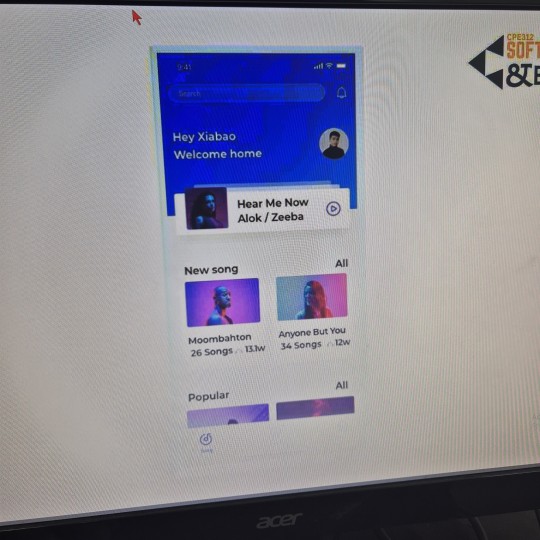
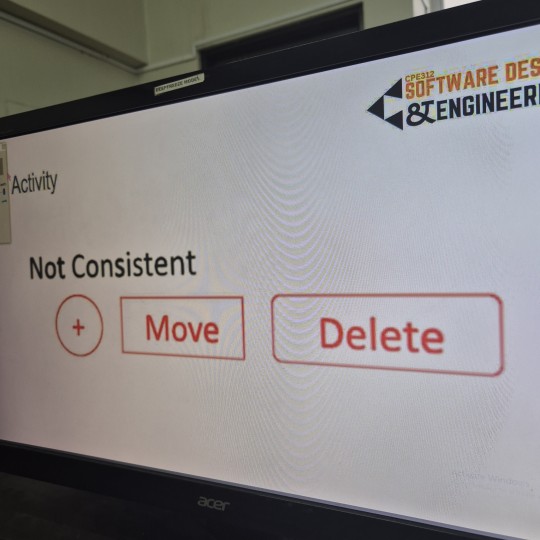

We were also given another task involving John Brooke’s System Usability Scale (SUS). This scale helps measure how easy or hard it is to use a system by asking 10 questions. Each question is rated from 1 to 5, and after calculating the responses, we get a score that tells us how good the usability is. A higher score means better usability. To calculate it, you subtract 1 from the odd-numbered questions' answers, subtract the even-numbered questions' answers from 5, and then multiply the total by 2.5 to get a score out of 100.



For this task, Tejano worked on solving the SUS with responses from 3 participants through google forms and google spreadsheets, while I did it manually. We added up all the scores, divided them by 3 (since there were 3 participants), and this gave us the average score, showing how usable the system was overall.
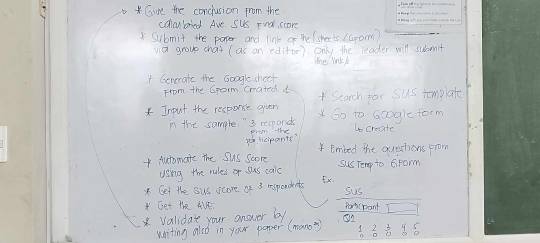
I really enjoyed the activity because we worked as a team and made sure no one was left behind. Everyone’s opinions were welcomed, and we didn’t have any arguments. I hope that when we work on our EduConnect TutorHub software, we can use the same strategy we showed today—doing teamwork and everyone participates.
ִֶָ𓂃 ࣪˖ ִֶָ🐇་༘࿐
#CPE3C#SDE#3rdYear#College#SoftwareDesign#JohnBrooke#SUS#ScalabilityUsageSystem#SoftwareTesting#QualityAssurance
2 notes
·
View notes
Text
September 5, 2024 *ೃ༄
During the fourth week of Software Engineering and Design, we had an in-depth discussion about Software Design and its significance in system development. We also discussed about the different design patterns, and things to consider when programming the system design.
Furthermore, we were also grouped randomly for a collaborative task regarding the discussion. For our group, we were given a scenario about a designing a system for collaborative document editing. To us, it sounded similar to programs like Canva or Google Docs. For the activity, we defined the core functionalities of the system, recommended design patterns that fit the features of the system, and sketched an initial system design. Then, we were tasked to analyze the work of the opposite group and see whether their recommended design patterns worked for their system or if it didn't.
In conclusion, I have learned a lot about software design and its value to a system project, and I also learned more about collaborating with other people with limited time budget.
That's all for the fourth week! ✧ ˚ · .




2 notes
·
View notes
Text

Finish Line PDS presents Software Development Services, Designed Specifically for Small Businesses and Startups.
#Software#SoftwareDevelopment#SoftwareDevelopers#SoftwareDesign#ProductDevelopment#ProductDesign#EngineeringHelp#TechnologySolutions#Startups#BusinessStartups#TechStartups#SmallBusiness#SmallBusinesses#SmallBusinesstips#Startup#ProductDesigns#Innovation#InnovationDesign#Innovations#Entrepreneur#Entrepreneurs#Entrepreneurship#FinishLinePDS
2 notes
·
View notes
Text
18TH WEEK
On this day June 4 2025, Our final presentation. During this day we presented our system to the teachers. We perform it well but some of the functionality of our system is not working well and we did find some things that we did not include in our system.
After the presentation the teachers instructed us to do some more work in our system so that it fully functions. After that we took some pictures and said thanks to the teachers.
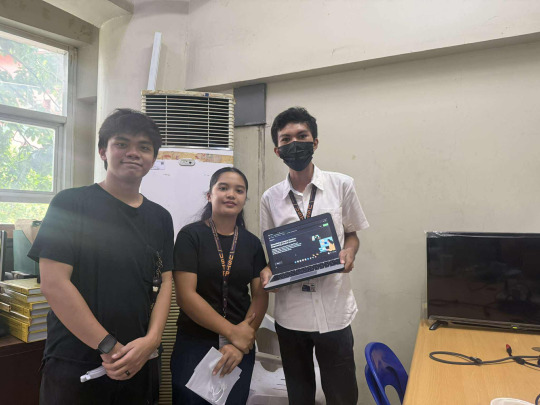
1 note
·
View note
Text
"Working Effectively with Legacy Code" by Michael C. Feathers is a must-read for developers and software engineers who deal with legacy systems. Legacy code, often characterized by its complexity, lack of documentation, and resistance to change, can be daunting to work with. This book provides practical strategies and techniques to understand, refactor, and improve legacy codebases. Below is a user-friendly, step-by-step breakdown of the key outcomes and takeaways from the book.
#LegacyCode#Refactoring#SoftwareDevelopment#CleanCode#CodeRefactoring#TechBooks#SoftwareEngineering#WorkingWithLegacyCode#MichaelFeathers#LegacySystems#CodeQuality#TechTutorial#SoftwareMaintenance#DevelopmentBestPractices#TechEducation#SoftwareCraftsmanship#LegacyCodeTips#RefactorLegacyCode#ProgrammingBooks#TestDrivenDevelopment#AgileDevelopment#SoftwareDesign#TechLeadership#ProgrammingBestPractices#DeveloperTools#TechCommunity
0 notes
Text
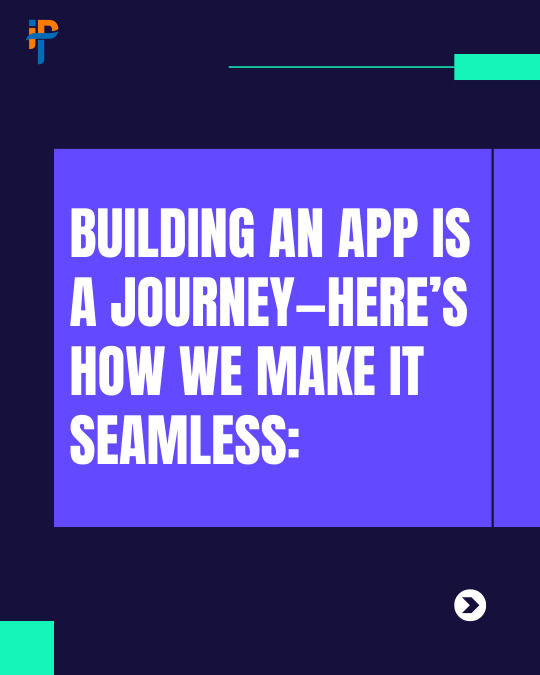
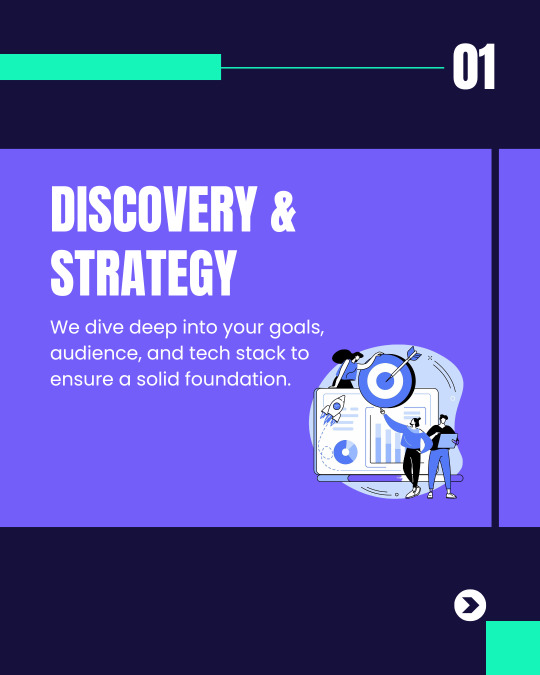
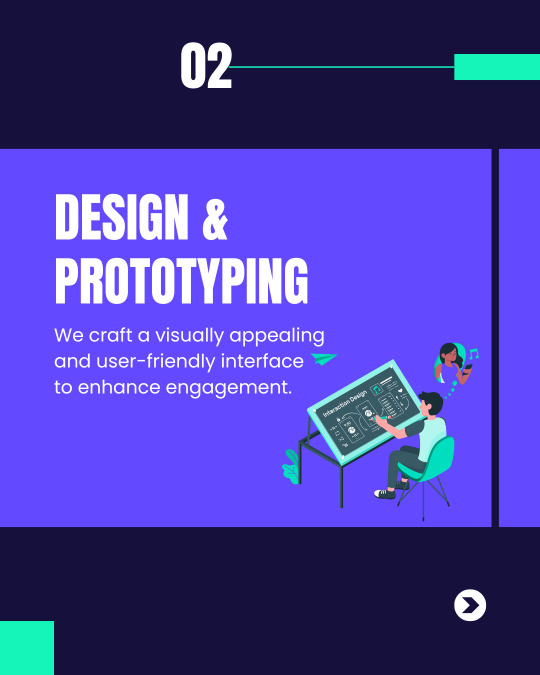
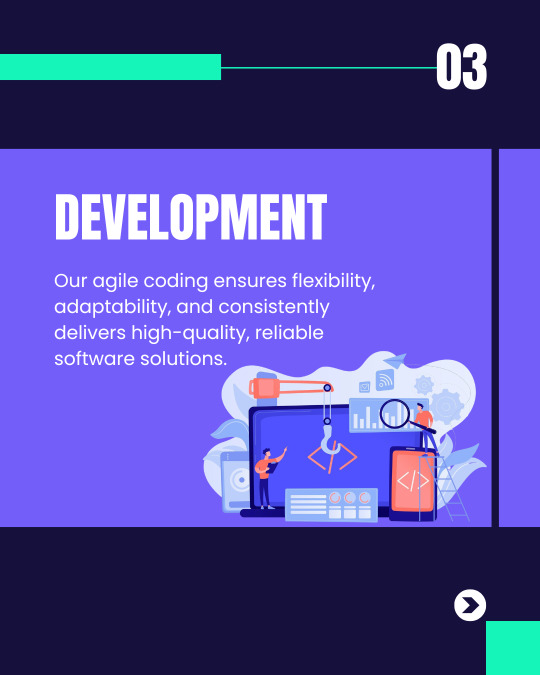
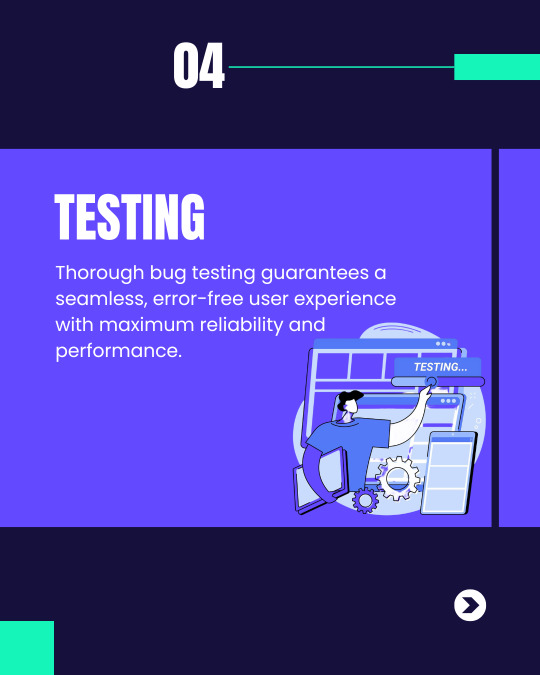
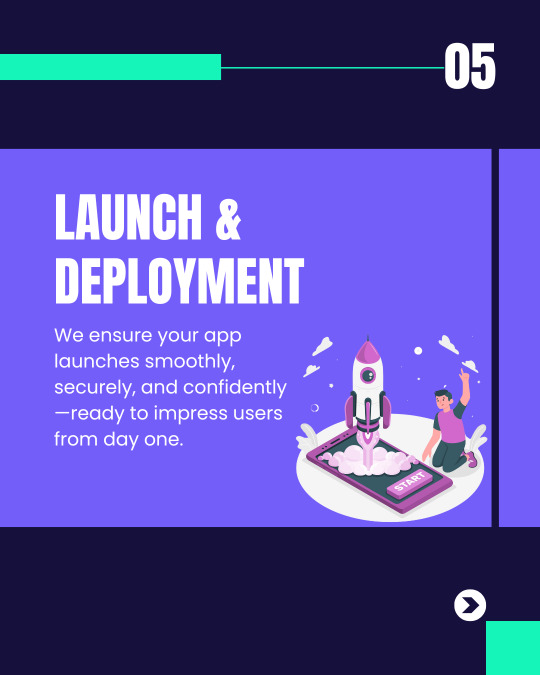
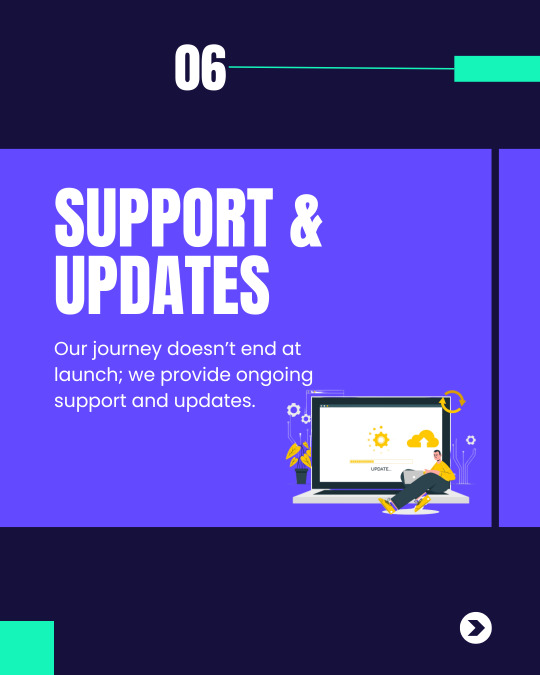
6 Steps to Build Your Dream App 🛠️ 📱 From Concept to Launch: How We Build Apps That Win! See how we turn ideas into reality! Ready to start your journey? Let’s chat! 💬
Visit - https://iphtechnologies.com/?utm_source=social&utm_medium=+&utm_campaign=social
1 note
·
View note
Text
Accelerate Your Business Growth with Digital Transformation Services

In today’s fast-changing world, businesses need to adapt and evolve with technology. At Tech Mind Developers, we offer Digital Transformation Services to help companies modernize, improve efficiency, and stay ahead in the competitive market. Whether you are a startup or an established business, upgrading to digital solutions can enhance productivity and customer experience.
Why Digital Transformation is Important?
Digital transformation is the process of using modern technology to improve business operations and customer engagement. Here’s why businesses need it:
Boost Efficiency: Automate tasks and reduce manual work.
Enhance Customer Experience: Offer faster and better services.
Increase Business Growth: Reach more customers and expand online.
Data-Driven Decisions: Get insights for better business strategies.
Competitive Advantage: Stay ahead with the latest digital tools.
Our Digital Transformation Services
At Tech Mind Developers, we provide customized solutions to meet your business needs:
Website & Mobile App Development — Build responsive and user-friendly platforms.
Cloud Solutions — Secure and scalable cloud-based services for smooth operations.
E-commerce Development — Launch a strong online store to increase sales.
Business Automation Software — Automate processes to improve productivity.
AI & Data Analytics — Use AI-powered tools for better decision-making.
Why Choose Tech Mind Developers?
Experienced Team: Our skilled professionals understand business needs.
Custom Solutions: We provide tailored digital services for every industry.
Affordable Pricing: High-quality solutions at the best price.
Client Satisfaction: We focus on long-term partnerships and trust.
Contact Us
Ready to transform your business? Let’s discuss how Tech Mind Developers can help.
📞 Phone: +91–7835019421 📧 Email: [email protected] 🌐 Website: https://www.techminddevelopers.com
#digitaltransformationservices #techminddevelopers #businessgrowth #digitalbusiness #automation #cloudsolutions #ecommercedevelopment #aiandanalytics #besttechcompany #softwaredevelopment #itservices #topsoftwarecompany #customsolutions #affordabletech #businessautomation #futuretechnology
#digitaltransformationservices#techminddevelopers#businessgrowth#digitalbusiness#automation#cloudsolutions#ecommercedevelopment#aiandanalytics#besttechcompany#softwaredevelopment#itservices#topsoftwarecompany#customsolutions#affordabletech#businessautomation#futuretechnology#mobile app development#softwaredesign#websitedevelopment#delhincr#mobileapplications#softwaresolutions#aligarh
0 notes
Text
Empowering Nurses Through Technology: The Role of Hospital Kiosks on Nurses Day

Nurses Day is more than a celebration — it's a tribute to the tireless dedication, compassion and skill that nurses bring to healthcare every day. As we recognize these frontline heroes, it’s important to spotlight the tools that support their work and enhance patient care. Hospital kiosks, powered by modern technology are revolutionizing the healthcare environment. By automating administrative tasks and streamlining operations, these self-service systems enable nurses to focus more on what matters most: delivering quality care to patients.
The Importance of Nurses Day in Healthcare
History and Significance of Nurses Day
Nurses Day is celebrated globally on May 12th, marking the birth anniversary of Florence Nightingale, the pioneer of modern nursing. This day is dedicated to acknowledging the critical role nurses play in safeguarding public health. From managing emergencies to providing emotional support, nurses are the backbone of the medical field. Nurses Day serves to honor their relentless service, highlight their contributions and promote the value of nursing as a profession.
Recognizing Nursing Excellence and Challenges
While nurses are celebrated for their compassionate care and clinical expertise, they often face considerable challenges — long hours, administrative overload and emotional fatigue. Recognizing these hurdles on Nurses Day brings attention to the need for systemic support. Technological tools, such as hospital kiosks, have emerged as practical solutions to reduce burdens and create more efficient healthcare environments.
Introduction to Hospital Kiosks in Modern Healthcare
Types of Hospital Kiosks and Their Features
Hospital kiosks are self-service terminals designed to streamline various healthcare services. Common types include:
Patient Check-In Kiosks: Allow patients to register upon arrival, verify insurance and update personal information.
Information Kiosks: Provide directions, hospital maps, department details and answers to frequently asked questions.
Self-Service Payment Kiosks: Enable bill payments via card, mobile wallets or cash, reducing queue times.
Prescription Refill Kiosks: Allow patients to request refills or schedule pharmacy pickups. Each kiosk type is equipped with user-friendly interfaces, multilingual support and secure data handling mechanisms.
Technological Advancements Enabling Smarter Healthcare
Advances in touchscreen technology, biometric authentication, cloud integration and artificial intelligence have made hospital kiosks more responsive and accessible. These kiosks now support features like facial recognition, electronic signatures and real-time data syncing with hospital management systems. These capabilities not only improve patient experience but also strengthen backend workflows that support nursing staff.
How Hospital Kiosks Support Nursing Excellence
Reducing Administrative Burden on Nurses
One of the most significant benefits of kiosks is the automation of routine administrative tasks. Patient check-in, consent form submissions and data entry can now be handled at kiosks.This reduces paperwork for nurses, allowing them to allocate more time to clinical assessments, care planning and patient interaction.
Improving Patient Engagement and Communication
Kiosks empower patients by providing clear,consistent information about their appointments, medications and treatment plans. Nurses benefit from this improved communication, as patients arrive better informed and more prepared for consultations. This results in smoother interactions and enhanced trust in care delivery.
Enhancing Accuracy and Efficiency in Data Management
Kiosks minimize human error by standardizing data input processes. They ensure that information such as patient history, allergies and insurance details is accurately captured and integrated into the hospital’s electronic health records (EHR). Nurses can then access complete up-to-date information without the need for redundant data collection.
Real-World Examples of Kiosk Integration Improving Nursing Practice
Case Study: Self-Service Check-In Kiosks in Urban Hospitals
Hospitals in major cities have successfully implemented self-service check-in kiosks to streamline patient flow. For instance, in a multi-specialty hospital in Dubai, kiosks reduced check-in times by 60% and freed up nurses to focus more on patient rounds and critical care. The result was improved patient satisfaction and reduced nurse burnout.
Innovative Uses of Kiosks for Nurse Training and Support
Some hospitals are using kiosks as resource hubs for nursing staff. These systems offer access to training modules, digital manuals and emergency protocols. Nurses can use them to refresh skills, access decision support tools or submit internal reports—all without needing a desktop computer or additional paperwork.
Future Trends: Expanding the Role of Hospital Kiosks in Nursing Care
Integration with AI and Telehealth Services
AI-integrated kiosks are beginning to offer symptom checking, health assessments and triage assistance. These capabilities help nurses prioritize cases and allocate resources more effectively. In telehealth settings, kiosks may serve as virtual consultation points, allowing nurses to assist with remote diagnostics and follow-up care.
Personalized Patient Interaction and Data Analytics
Data analytics embedded in kiosks can track patient behavior, preferences and health patterns. Nurses can use this data to personalize care plans, identify at-risk patients and proactively manage chronic conditions. Predictive analytics also assist in staffing and scheduling, ensuring optimal nurse-to-patient ratios.
Conclusion
On this Nurses Day, it’s essential to celebrate not only the dedication of nurses but also the innovations that uplift their work. Hospital kiosks exemplify how technology can enhance care delivery, reduce workload and create a more responsive healthcare system. By investing in intelligent tools that support nurses, healthcare institutions are building a future where quality care and efficiency go hand in hand.
1 note
·
View note
Text
https://www.thefullstack.co.in/software-design-patterns/

#SoftwareDesign#DesignPatterns#ProgrammingTutorial#CodeArchitecture#SoftwareEngineering#CodingTips#LearnToCode#DevCommunity#CleanCode#OOP (Object-Oriented Programming)#SOLIDPrinciples
0 notes
Text
Week 16: Eggventure is DONE!

This week, we had our final meeting with Sir Carl for the last checking of our application, Eggventure. It felt like a huge milestone because, after all the hard work and countless hours spent on refining the project, it was finally done. However, this week turned out to be incredibly rough and exhausting. The pressure of meeting deadlines, fixing last-minute bugs, and ensuring everything was in place for the final review made it feel like every minute counted. The stress of trying to perfect every detail, while also juggling other responsibilities, left little time for anything else. It was one of those weeks where you’re constantly running against the clock, and the exhaustion really started to take its toll. Despite all the challenges, getting the app ready for final review felt like a major accomplishment, and once it was done, there was a sense of relief mixed with pride in knowing that we had put everything into it. But after all the challenges, it was incredibly satisfying and relieving to finally see our project come to fruition. The feeling of completing the application and knowing we had put in so much effort and dedication made all the late nights and stressful moments worthwhile. It was a huge weight lifted off our shoulders, and the sense of accomplishment was overwhelming. As for Sir Carl, I genuinely enjoyed this course because of his guidance and teaching style. His ability to keep us engaged, challenge our thinking, and push us to perform our best made all the difference. Even when the going got tough, his support and insights kept us going. I’m grateful for his dedication to helping us succeed and for making the learning experience memorable. This course wouldn’t have been the same without his encouragement and expertise, and I can honestly say I’ll carry the lessons he taught us throughout my academic journey and beyond.
0 notes
Text
Week 15: Intense Revision and Final Touches of the System Development
by Sittie Janimah A. Disimban
Reflection. Journey. Apprecation.
After months of dedication and overcoming numerous challenges, today marks a major milestone for our capstone project: the final submission to Engr. Carl Suasola. This journey has truly been a rollercoaster ride—filled with moments of frustration, stress, and moments of triumph. Through it all, our determination and teamwork have carried us to this point.


Every moment was spent revising, debugging, and improving both the app and the accompanying papers. We worked late nights, making sure everything was as flawless as possible, with no detail overlooked. As the days passed, we could see our project evolve into something much more polished, and the sense of accomplishment grew with every fix.

Finally, after days of tireless effort, Engr. Suasola gave his approval for our project. That moment of relief and pride was indescribable—a true reflection of the teamwork, persistence, and dedication we had invested in this capstone project. As we close this chapter, we are eager to take the next step in our academic journey: Technopreneurship in the upcoming semester. We are excited about the future of our project and the opportunity to transform it into something even more impactful. Armed with the lessons, challenges, and successes we’ve experienced so far, we are ready to continue growing and applying what we’ve learned to create something valuable and meaningful. This project not only helped us develop technical skills but also gave us a deeper understanding of what it takes to work as a team, overcome obstacles, and keep pushing forward. We look forward to seeing how our hard work continues to shape our future endeavors. Heartfelt appreciation to my team, John Kenneth Cabibil and Stinnely Dagooc. Thank you for welcoming me into your group. It was a pleasure working the digitzed log book system with you. 🤍
1 note
·
View note
Text
CPE312 Software Design and Engineering
App Presentation + Exam Exemption (Finals)
Week 16
December 17-18, 2024
ִֶָ𓂃 ࣪˖ ִֶָ🐇་༘࿐
Today was the big day—our final presentation for EduConnect TutorHub. Sir Carl told us that if we met 100% of the requirements, we’d get a perfect score, which motivated us to stay up all night finishing both the app and the paperwork. Early this morning, we gathered at the 4th floor of the CEA building to revise and finalize everything. When it was our turn, our leader introduced the app and its functionality, while I presented the documentation. After the presentation, Sir Carl pointed out some needed revisions, so we planned to fix everything and return the next day.
Later that night, Sir Carl messaged our group chat and announced that we were exempted from the finals exam as long as we submitted all requirements within the week. We were so happy—thank you, Sir Carl!


The next day, we worked hard to complete everything. Our leader prepared screenshots for white-box and black-box testing, another teammate edited the user manual brochure and tutorial video, and I updated Chapter 4 to show the app’s 100% success rate. In Chapter 5, we concluded that the app is fully functional and ready for deployment, with recommendations for future improvements. We also tested its performance on multiple devices, showing that it worked smoothly without errors.
For the System Usability Scale (SUS), Sir Carl asked us to survey more respondents to ensure accurate results. We immediately conducted surveys with classmates and managed to get a 90+ SUS score, earning an A+ rating with the best imaginable ranking. After all the revisions and the final presentation, Sir Carl gave us a perfect 100%. We were relieved and proud to have completed everything on time and secured exam exemption.


This project had its challenges—stressful moments, arguments, and sleepless nights—but we pulled through as a team. I’m grateful to Sir Carl for his guidance, which helped turn our ideas into reality. This feels like a huge milestone for me as a 3rd-year Computer Engineering student. With that, we, the team of EduConnect TutorHub, are signing off. Good night!






𓂃 ࣪˖ ִֶָ🐇་༘࿐
#SDE#3rdYear#SoftwareDesign#FinalPresentation#Exempted#100%#ComputerEngineering#CPE3C#EduConnectTutorHub
1 note
·
View note
Text
Software Architecture Patterns: An In-Depth Guide for Developers

Latest News
News
Stock Market Update: Nifty 50 Movement, Trade Setup, and Top Stock Picks
News
Markets on Edge: Indian Indices Dip, Bitcoin Hits Record, and Global Trends Shape the Week Ahead
News
BlueStone Jewellery Plans ₹1,000 Crore IPO with Fresh Issue and OFS
Source: deazy.com
In the fast-evolving world of software development, understanding the software architecture patterns is crucial for building robust, scalable, and maintainable applications. With the growing demand for complex systems in India’s tech landscape, developers must be well-versed in various architectural patterns to meet the diverse needs of their projects. This article will explore the essential software architecture patterns, their characteristics, advantages, and use cases, helping developers make informed decisions in their projects.
What Are Software Architecture Patterns?
Software architecture patterns are standardized solutions to common software design problems. They provide a framework that guides developers in structuring their applications, ensuring better organization, scalability, and maintainability. By employing these patterns, developers can avoid pitfalls associated with software design and improve their overall development workflow.
In India, where software development is a booming industry, especially in cities like Bengaluru and Hyderabad, a solid understanding of software architecture patterns is essential for both new and experienced developers.
Common Software Architecture Patterns
1. Layered Architecture
https://businessviewpointmagazine.com/wp-content/uploads/2024/11/34.1-Layered-Architecture-Source-apisec.ai_.jpg
The layered architecture pattern divides the application into distinct layers, each responsible for specific functionalities. Typically, these layers include:
Presentation Layer: The user interface components.
Business Logic Layer: The core functionalities and rules of the application.
Data Access Layer: The layer that handles data retrieval and storage.
Advantages:
Separation of Concerns: Each layer has a specific responsibility, making it easier to manage and modify.
Testability: Layers can be tested independently, enhancing the quality of the code.
Use Cases:
This pattern is ideal for enterprise applications where different teams can work on different layers simultaneously.
2. Microservices Architecture
Microservices architecture is an approach where applications are developed as a collection of small, independently deployable services. Each service is responsible for a specific business capability and communicates with others through APIs.
Advantages:
Scalability: Services can be scaled independently based on demand.
Flexibility: Developers can use different technologies and programming languages for different services.
Use Cases:
This pattern is gaining traction among startups and large enterprises in India, especially those looking to innovate rapidly and scale their applications seamlessly.
3. Event-Driven Architecture
https://businessviewpointmagazine.com/wp-content/uploads/2024/11/34.2-Event-Driven-Architecture-Source-webvideoadspace.net_.jpg
In an event-driven architecture, the system reacts to events or changes in state, often leveraging message queues or event streams to communicate between components. This pattern is especially useful in systems that require real-time data processing.
Advantages:
Responsiveness: Systems can react to changes in real-time, improving user experience.
Decoupling: Components are loosely coupled, allowing for easier updates and modifications.
Use Cases:
This architecture is ideal for applications that need to process large volumes of data or require real-time analytics, such as financial services and e-commerce platforms in India.
4. Serverless Architecture
Serverless architecture allows developers to build applications without managing the underlying infrastructure. Instead, they rely on third-party services (like AWS Lambda) to run their code in response to events.
Advantages:
Cost-Effective: You only pay for the compute time you consume.
Focus on Code: Developers can concentrate on writing code rather than managing servers.
Use Cases:
This pattern is suitable for startups and small businesses in India aiming to minimize operational costs while maintaining agility in development.
5. Client-Server Architecture
https://businessviewpointmagazine.com/wp-content/uploads/2024/11/34.3-Client-Server-Architecture-Source-herovired.com_.jpg
The client-server architecture is a traditional model where the client (user interface) requests services from the server (data processing and storage). This architecture separates the client and server functionalities, enabling efficient resource management.
Advantages:
Scalability: The server can handle multiple client requests simultaneously.
Centralized Management: Updates and maintenance are easier as they can be handled on the server.
Use Cases:
This pattern is commonly used in web applications and online services, making it relevant for various industries in India, including finance and healthcare.
Choosing the Right Software Architecture Pattern
Selecting the appropriate software architecture pattern for your project depends on various factors, including:
Project Requirements: Understand the functional and non-functional requirements of your application.
Team Structure: Consider the skills and expertise of your development team.
Future Scalability: Choose a pattern that allows for growth and scalability based on anticipated changes.
Conclusion
As the software development landscape continues to evolve, mastering various software architecture patterns is essential for developers, particularly in a rapidly growing market like India. By understanding these patterns, developers can make informed decisions that lead to more efficient, maintainable, and scalable applications. Whether you opt for a layered architecture, microservices, event-driven, serverless, or client-server architecture, knowing the advantages and use cases will equip you with the tools to succeed in your software development journey.
Incorporating the right software architecture patterns will not only enhance your application’s performance but also ensure a smoother development process, ultimately contributing to a better user experience. Embrace these architectural principles, and watch your software projects flourish in today’s competitive landscape.
Did you find this article helpful? Visit more of our blogs! Business Viewpoint Magazine
#softwaredeveloper#softwareengineer#softwaredesign#softwaretesting#softwaresolutions#softwareengineering#softwarehouse#softwarecompany#devops#softwaredevelopers#softwaredev
0 notes